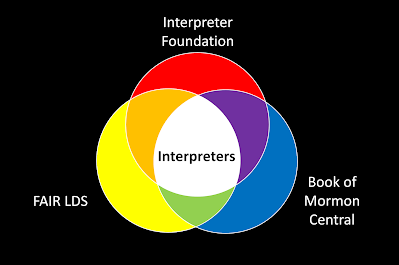To clarify some confusion that exists, when I refer to people (not the Urim and Thummim) as Interpreters, I’m not referring to everyone who proposes interpretations of Church history, the Book of Mormon, the teachings of the prophets, etc. Quite the opposite.
Everyone has the right and responsibility to do study and interpret for themselves, as the scriptures, Church leaders (and common sense) explain.
The term Interpreters as applied to individuals is also not pejorative, argumentative or contentious. It is merely descriptive. I use the term Interpreters to promote clarity and understanding, not to generate controversy or argument. It is an easy shorthand way to describe the underlying philosophy and agenda of those who fit the description.
I use the term Interpreters to designate a mentality or worldview shared by those who claim the privilege of interpreting for others and acting as gatekeepers based on their claims of superior knowledge by virtue of their credentials, their good intentions, their allegiance to consensus, and (in some cases) their positions of employment in positions of trust (such as teaching at BYU or for CES).*
Thus, the term Interpreters is not contentious, but their approach to apologetics is inherently contentious.
Although the term originated with the Interpreter Foundation, it does not refer to everyone associated with that organization and is not limited to those associated with that organization. Nor does it apply to everyone involved with the Book of Mormon Central, FAIRLDS, or any other group.
This graphic explains the concept.
Interpreters are found within these organizations (especially at the leadership and editorship levels), but many people affiliated with them are not Interpreters.
For example, Book of Mormon Central hosts many Interpreters.
Here is an outstanding example of the Interpreter mentality embedded in the title of a Kno-Why:
How Are Oliver Cowdery’s Messenger and Advocate Letters to Be Understood and Used?
also here:
The article, which is replete with misdirection and errors, purports to tell the world how to understand and use the teachings of a member of the First Presidency, actually the Assistant President of the Church, Oliver Cowdery.
The audacity of the anonymous authors of this piece is breathtaking.
That’s what makes them Interpreters. And, naturally, the article features the M2C logo, the telltale sign that the article will do everything possible to promote and defend M2C at the expense of accuracy and reason.
The opposite approach is encouraging people to make informed decisions for themselves, based on good information and consideration of multiple working hypotheses. As President Nelson has taught, “good inspiration is based upon good information.”
Gatekeeping organizations such as the Interpreter, Book of Mormon Central, and FAIRLDS oppose presenting a variety of faithful interpretations. That’s what makes them organizational Interpreters.
At NoMoreContention.com, we will use examples of the Interpreter mentality to demonstrate a better way to avoid and eliminate contention for the benefit of everyone.
_____
*Obviously this does not mean duly called and sustained Church officers acting within the scope of their responsibilities.
Source: About Central America


